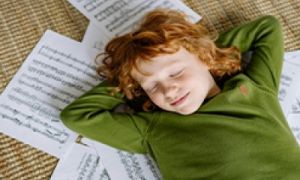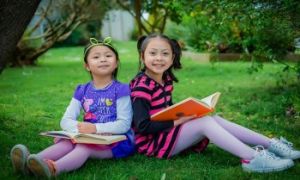Anecdotal record observations are a valuable tool in early childhood education, helping educators document children's learning experiences and development. These records provide real-life observations that link directly to the EYLF outcomes. The following article provides Practical Examples Of Anecdotal Observations For Babies, Toddlers and Preschoolers and Practical Examples Of Anecdotal Observations For Each EYLF Learning Outcome.
Babies
Example 1
Observation:
During tummy time, Mia (6 months) reaches for a soft toy and giggles when she successfully grabs it. She shakes the toy and watches it move before attempting to bring it to her mouth.
EYLF Link:
- Outcome 1: Children have a strong sense of identity – Mia is developing confidence in exploring her surroundings.
- Outcome 3: Children have a strong sense of well-being – She is strengthening her fine motor skills and coordination.
Evaluation:
Mia is actively engaging in sensory exploration, demonstrating early problem-solving skills and physical coordination. She is showing curiosity and persistence as she interacts with the toy.
Further Learning:
- Introduce various textured toys to encourage sensory development.
- Engage in guided movement activities that support muscle strength, such as gently rolling a toy for Mia to track visually.
- Use gentle verbal encouragement (e.g., “You found the toy!”) to reinforce positive learning experiences.
Example 2
Observation:
During a sensory play session, Noah (8 months) reaches for a textured ball, squeezes it, and giggles. He then drops it and watches as it rolls away before crawling toward it.
EYLF Link:
- Outcome 1: Developing confidence in exploring his surroundings.
- Outcome 3: Strengthening fine motor skills and coordination.
Evaluation:
Noah is demonstrating curiosity and persistence in exploring objects. His ability to track the ball and move toward it shows early problem-solving and motor development.
Further Learning:
- Introduce different textured objects to enhance sensory exploration.
- Encourage cause-and-effect play with rolling toys.
- Use verbal reinforcement (e.g., “You found the ball!”) to support engagement.
Toddlers
Example 1
Observation:
Leo (2 years) stacks blocks carefully, counting “one, two, three” as he places each one. When the tower falls, he laughs and starts again, adjusting his stacking method.
EYLF Link:
- Outcome 4: Children are confident and involved learners – Leo is experimenting with problem-solving and persistence.
- Outcome 5: Children are effective communicators – He is using early numeracy skills and verbal expression.
Evaluation:
Leo is displaying emerging numeracy skills through counting and problem-solving. His ability to adjust his approach after the tower falls shows resilience and adaptability in learning through trial and error.
Further Learning:
- Provide different-shaped blocks to enhance spatial awareness and problem-solving.
- Encourage group block play to introduce social collaboration and communication skills.
- Introduce a simple counting song to reinforce early numeracy concepts in a fun way.
Example 2
Observation:
Emma (2 years) is playing with a doll. She gently pats its back and says, “Shh, baby sleeping.” She then places the doll in a small bed and covers it with a blanket.
EYLF Link:
- Outcome 1: Developing a sense of identity and empathy.
- Outcome 4: Engaging in imaginative play and problem-solving.
Evaluation:
Emma is demonstrating early social-emotional skills by caring for the doll. Her pretend play shows an understanding of routines and empathy toward others.
Further Learning:
- Provide role-play opportunities with dolls, toy food, and dress-up clothes.
- Encourage storytelling about caring for others.
- Introduce books about family and emotions to deepen understanding.
Preschoolers
Example 1
Observation:
Sofia (4 years) gathers leaves and sticks outside, arranging them into patterns. She explains, “This is my nature picture. The leaves are the sky, and the sticks are the trees.”
EYLF Link:
- Outcome 2: Children are connected with and contribute to their world – Sofia is engaging with nature and expressing creativity.
- Outcome 5: Children are effective communicators – She is using language to describe her ideas and artistic choices.
Evaluation:
Sofia is demonstrating creativity and storytelling through her artwork. She is using nature as a medium for expression and showing an early understanding of patterns and design.
Further Learning:
- Introduce nature-based art projects, such as creating leaf rubbings or collages.
- Ask open-ended questions to expand storytelling (e.g., “What else could be in your nature world?”).
- Connect her learning to science discussions about seasons, trees, and habitats to deepen her understanding of the environment.
Example 2
Observation:
Liam (4 years) is building a tower with blocks. He carefully places each piece, then steps back and says, “It’s a castle!” He adds smaller blocks around it and explains, “These are the houses.”
EYLF Link:
- Outcome 4: Developing problem-solving and creativity.
- Outcome 5: Using language to describe ideas and express thoughts.
Evaluation:
Liam is demonstrating spatial awareness and imaginative thinking. His ability to describe his creation shows strong communication skills and creativity.
Further Learning:
- Introduce different building materials to expand creativity.
- Encourage group construction projects to foster collaboration.
- Ask open-ended questions like, “What else could be in your castle?” to extend thinking.
Practical Examples For Each EYLF Learning Outcome
Here are practical examples for each Early Years Learning Framework (EYLF) learning outcome, demonstrating how children engage in meaningful learning experiences:
Outcome 1: Children Have a Strong Sense of Identity
Example:
During free play, Ava (3 years) chooses a doll and says, “This is my baby.” She gently rocks it and sings a lullaby, showing care and attachment.
EYLF Link:
- Children feel safe, secure, and supported – Ava is demonstrating emotional connection and nurturing behavior.
- Children develop autonomy and confidence – She is making independent choices in play.
Further Learning:
- Provide role-play opportunities with dolls, dress-up clothes, and toy food.
- Encourage storytelling about family and emotions to deepen understanding.
Outcome 2: Children Are Connected With and Contribute to Their World
Example:
During outdoor play, Leo (4 years) notices a bird building a nest. He excitedly tells his friends, “Look! The bird is making a home!” The group watches and discusses how birds care for their babies.
EYLF Link:
- Children develop a sense of belonging to groups and communities – Leo is engaging with peers in shared learning.
- Children become socially responsible and show respect for the environment – He is observing and appreciating nature.
Further Learning:
- Introduce a nature journal where children can draw and describe what they see outside.
- Plan a bird-watching activity to explore habitats and environmental care.
Outcome 3: Children Have a Strong Sense of Wellbeing
Example:
Emma (2 years) is learning to climb a small play structure. She hesitates at first but, with encouragement, she takes small steps and reaches the top. She smiles proudly and says, “I did it!”
EYLF Link:
- Children become strong in their social and emotional wellbeing – Emma is developing resilience and confidence.
- Children take increasing responsibility for their own health and physical wellbeing – She is practicing gross motor skills.
Further Learning:
- Provide safe climbing opportunities to build strength and coordination.
- Encourage positive self-talk (e.g., “You’re trying so hard!”) to boost confidence.
Outcome 4: Children Are Confident and Involved Learners
Example:
Sofia (5 years) is experimenting with mixing colors during painting. She notices that red and yellow make orange and excitedly says, “I made a new color!” She continues exploring different combinations.
EYLF Link:
- Children develop dispositions for learning such as curiosity and creativity – Sofia is experimenting and discovering new concepts.
- Children develop a range of skills and processes such as problem-solving and investigation – She is testing ideas and observing results.
Further Learning:
- Set up a color-mixing station with paints and encourage predictions.
- Introduce science experiments that involve cause-and-effect learning.
Outcome 5: Children Are Effective Communicators
Example:
During group time, Noah (3 years) listens to a story and then shares, “I have a dog like the one in the book!” He describes his pet and how he takes care of it.
EYLF Link:
- Children interact verbally and non-verbally with others for a range of purposes – Noah is making connections between the story and his own experiences.
- Children express ideas and make meaning using a range of media – He is using language to communicate thoughts.
Further Learning:
- Encourage storytelling sessions where children share personal experiences.
- Provide puppets or props to support expressive communication.
Anecdotal observations help educators track progress, identify learning opportunities, and support children's development in meaningful ways.
Further Reading
Anecdotal Records In Childcare
Different Types Of Observation Methods
Q: What Is An Anecdotal Record?


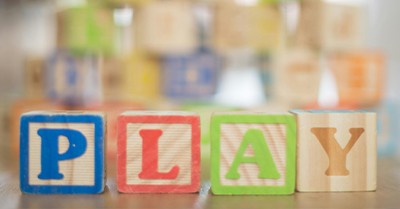


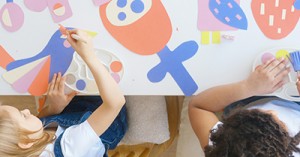
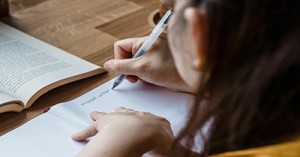
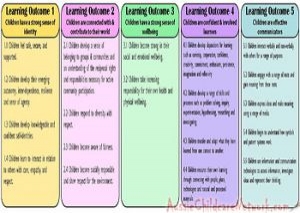 Here is the list of the EYLF Learning Outcomes that you can use as a guide or reference for your documentation and planning. The EYLF
Here is the list of the EYLF Learning Outcomes that you can use as a guide or reference for your documentation and planning. The EYLF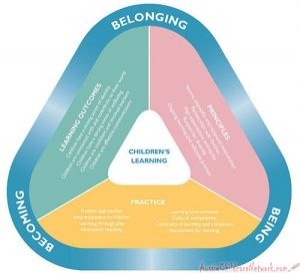 The EYLF is a guide which consists of Principles, Practices and 5 main Learning Outcomes along with each of their sub outcomes, based on identity,
The EYLF is a guide which consists of Principles, Practices and 5 main Learning Outcomes along with each of their sub outcomes, based on identity,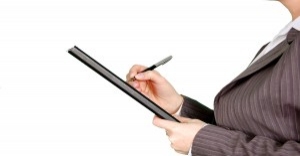 This is a guide on How to Write a Learning Story. It provides information on What Is A Learning Story, Writing A Learning Story, Sample
This is a guide on How to Write a Learning Story. It provides information on What Is A Learning Story, Writing A Learning Story, Sample One of the most important types of documentation methods that educators needs to be familiar with are “observations”. Observations are crucial for all early childhood
One of the most important types of documentation methods that educators needs to be familiar with are “observations”. Observations are crucial for all early childhood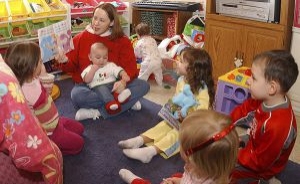 To support children achieve learning outcomes from the EYLF Framework, the following list gives educators examples of how to promote children's learning in each individual
To support children achieve learning outcomes from the EYLF Framework, the following list gives educators examples of how to promote children's learning in each individual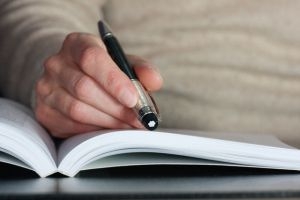 Reflective practice is learning from everyday situations and issues and concerns that arise which form part of our daily routine while working in an early
Reflective practice is learning from everyday situations and issues and concerns that arise which form part of our daily routine while working in an early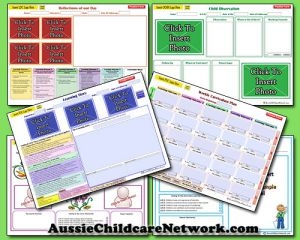 Within Australia, Programming and Planning is reflected and supported by the Early Years Learning Framework. Educators within early childhood settings, use the EYLF to guide
Within Australia, Programming and Planning is reflected and supported by the Early Years Learning Framework. Educators within early childhood settings, use the EYLF to guide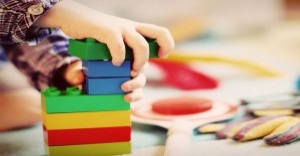 When observing children, it's important that we use a range of different observation methods from running records, learning stories to photographs and work samples. Using
When observing children, it's important that we use a range of different observation methods from running records, learning stories to photographs and work samples. Using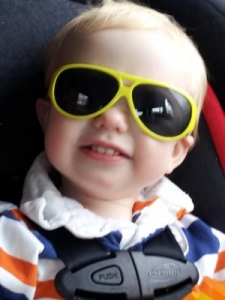 This is a guide for educators on what to observe under each sub learning outcome from the EYLF Framework, when a child is engaged in
This is a guide for educators on what to observe under each sub learning outcome from the EYLF Framework, when a child is engaged in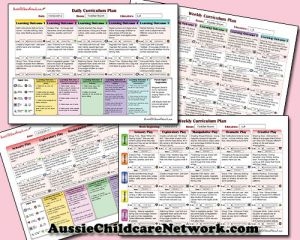 The Early Years Learning Framework describes the curriculum as “all the interactions, experiences, activities, routines and events, planned and unplanned, that occur in an environment
The Early Years Learning Framework describes the curriculum as “all the interactions, experiences, activities, routines and events, planned and unplanned, that occur in an environment
